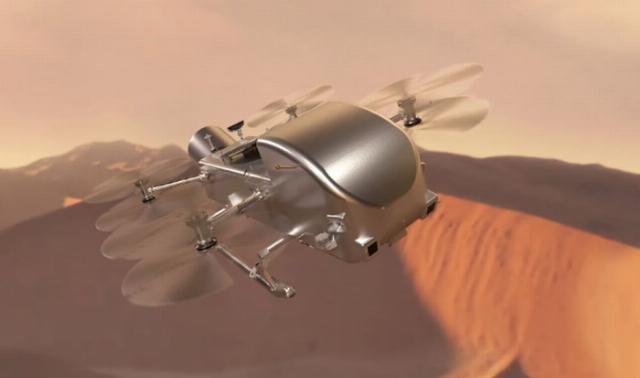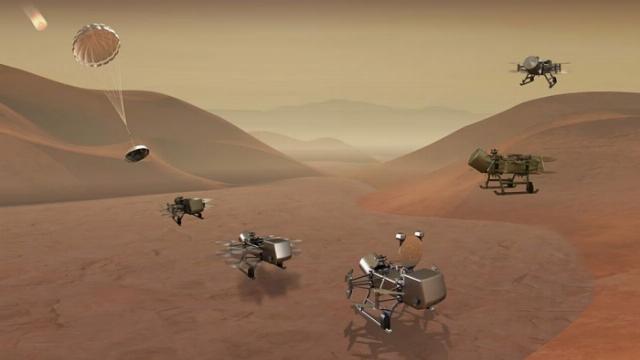
The Dragonfly device
After years of delay due to COVID-19 and budget issues, the Dragonfly space project has finally been officially approved by NASA. The mission to send a research vehicle to Saturn's largest moon, Titan, will start in 2028. She will become the ideological heir to the Mars Ingenuity Mars project, a new milestone in the use of rotorcraft to explore other worlds.
Titan is an extremely difficult object to study, since it has a dense atmosphere of nitrogen and methane, the latter forming many organic compounds under the influence of solar radiation. Some of them fall out in rain, others remain in the form of clouds, and some form sedimentary rocks. It is assumed that the surface of Titan is an analogue of a swamp with puddles of "primary soup", which may one day give rise to a new life.

The Dragonfly device
An apparatus in the form of a multi-rotor drone has been specially created to explore such a world. He does not know how to fly fully, but he can make long "jumps", skirting obstacles and flying over puddles. "Dragonfly" will move between objects of interest to scientists on the surface of Titan and study them using instruments on board. The device has a nuclear power plant operating on the principle of RTG to ensure maximum duration of operation. The main objective of the Dragonfly mission is to study the chemical composition of the atmosphere and soil of Titan. The device will search for familiar biosignatures and new ones that are still unknown to science. Scientists are skeptical about the idea of finding living organisms here, but they are interested in the environment itself, the conditions in which life can originate on other planets.
Alexander Martynenko
